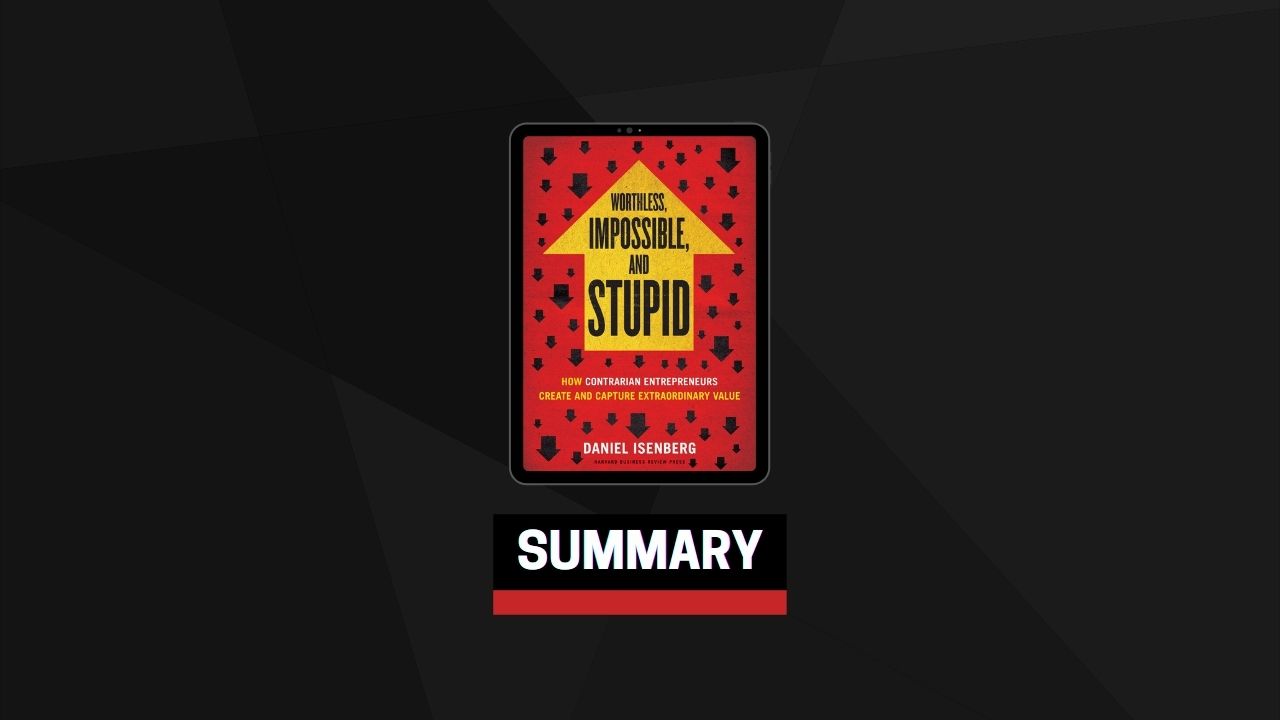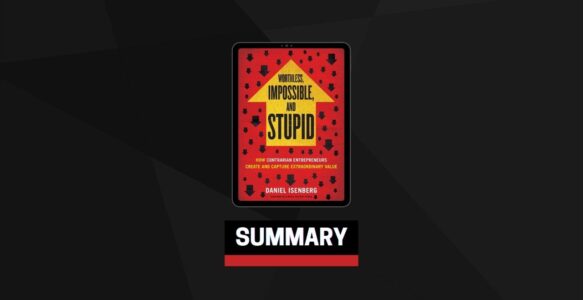Myth #1 Entrepreneurs Must Be Innovators
If you had one dollar to invest, would you invest it in an innovator or an entrepreneur?
It’s a simple little question. After a few seconds of thought, most of us would answer, the latter. Yet we all know that innovation is a good thing.
The question strikes us as strange initially, because we reflexively equate innovation with entrepreneurship. There are institutes for innovation and entrepreneurship and degrees in innovation and entrepreneurship.
Innovation is an important social good, and economic research shows that innovations (especially technical breakthroughs) have been consistent, long-term drivers of economic and social prosperity over the ages. Innovation is crucial to societal advance.
So why does the entrepreneur get our dollar? One reason is that we are not quite sure in whom we are investing when we invest in the innovator; we do not identify a specific economic actor, or if there even is an economic actor. Is it the bench scientist? The engineer in the field? The product development manager in the market?
You know exactly who the entrepreneur is, but you’re never quite sure who is the innovator.
Most of us would agree that innovation has something to do with the tangible manifestation of novel ideas. But entrepreneurship is about the creation of tangible value. Ideas help, but the sine qua nons for entrepreneurs—hard work, ambition, resourcefulness, unconventional thinking, salesmanship, and leadership—will usually trump brilliant ideas. The perception of extraordinary value is just a piece of the picture, which only becomes complete with creation and capture of that value as well.
Myth #2 Entrepreneurs Must Be Experts
It would be an exaggeration to claim that expertise is a disadvantage or even irrelevant for entrepreneurship; in fact, there is evidence that having a founder launch a venture with a decade or so of industry immersion under his or her belt is a predictor of growth and success. But an argument can be made that looking at a topic with fresh eyes and without the blinders and beliefs about what is “impossible” facilitates being able to see opportunity where others do not.
Whether we think it is an advantage or not, a priori experience in the subject matter is certainly not a prerequisite, even for highly technical endeavors. Entrepreneur and philanthropist Naveen Jain (who is also on the X PRIZE Foundation board) says, “The real disruptors will be those individuals who are not steeped in one industry of choice . . . but instead, individuals who approach challenges with a clean lens, bringing together diverse experiences, knowledge and opportunities . . . non-expert individuals will drive disruptive innovation.”
Myth #3 Entrepreneurs Must Be Young
The powerful stereotype of the young entrepreneur endures. Maybe it’s because Bill Gates, Steve Jobs, Michael Dell, and Mark Zuckerberg were so successful in their youth. Yet even most of these iconic young entrepreneurs relied on “adult supervision” in the early growth years, hiring experienced hands to help them navigate the tricky start-up waters. Perhaps it’s because television and movies have glamorized the idea that entrepreneurship is best practiced by the young before they are tainted by years of learning the way the world works, rather than how it should work.
But the evidence does not support the stereotype. In 2008, researcher Vivek Wadhwa showed that the number of founders older than 50 was double the number of founders younger than 25. Wadhwa’s study revealed that the highest rate of entrepreneurial activity had shifted to baby boomers in the 55–64 age group—a trend he predicted would continue for several years to come.
Generalizations about who can and cannot become entrepreneurs, and where they can do it, are not only self-limiting, but empirically elusive as well in part because entrepreneurship is about exceptions. So there may not be anything meaningfully typical about entrepreneurs at all. They certainly don’t need to be young. They don’t need to be an expert in something. And they don’t need to be innovators. Those are myths.
Why the Best Entrepreneurs Seem Crazy
In December 2008 Toyota’s executives, heads hung in shame, gathered to announce the first losses since 1938—almost $2 billion—of the world’s largest auto manufacturer.
Across the Pacific, number two General Motors, the symbol of corporate America, had just taken out an emergency federal loan, approved by presidential order. Rumors of impending GM bankruptcy were rife—predictions that were to come true a few months later. These were the darkest few months in all of automotive history. These were also the months during which Jay Rogers was convincing private investors to back his new car company. Not a green electric vehicle or a hybrid, but a gasoline-powered sedan.
Was it an untimely choice to launch a car company at exactly the same moment the global auto industry was on its knees? Many would think untimely too soft a word; how about foolhardy? When Rogers founded Local Motors, a car company that uses crowdsourcing to design its cars and then allows customers to come to the factory to finish the manufacturing of their own car, he was interested in doing what nobody thought made sense; in part his confidence that he was on the right track was because nobody thought it made sense.
It is the job of the entrepreneur to sniff out and realize opportunity that is overlooked, undervalued, or even berated by others.
In just four years, Local Motors has managed to convince paying customers that Rogers’s view of the market was right. Some 140 of them have ordered their own Rally Fighter at about $75,000 per car, with five per month (and increasing) regularly rolling out of the Local Motors microfactory in Phoenix and numerous special projects underway to build special car fleets for companies and license the Local Motors technology to large vehicle makers.
Why the Best Ventures Seem Worthless
Who would see value in sending a package from New York to Newark by way of Atlanta? FedEx founder Fred Smith. But there are just as many examples of people who successfully defied conventional wisdom without earning Smith’s fame. Those who will end up succeeding don’t automatically censor themselves because certain problems are supposedly too difficult to solve or too complex to navigate or because opportunities are too remote to ever turn into something of value.
Value from worm poop? That sounds like a topic of some kind of late-night adolescent conversation. But while a freshman at Princeton University, Tom Szaky came up with a novel method of manufacturing fertilizer from the feces of red worms: he fed Princeton cafeteria waste to millions of the minuscule worms and then packaged their then-liquefied waste in used plastic bottles donated by schoolchildren. Terracycle is now a fast-growing “greentech” company, successfully diverting billions of units of various wastes and using them to create over fifteen hundred products available at major retailers, ranging from Walmart to Whole Foods. With offices in twenty countries, Terracycle distributes its fertilizer through The Home Depot and other major retailers
Entrepreneurs see and create value in situations that other people view as worthless, impossible, or stupid. That’s the job of the entrepreneur. Of course, no one, including the entrepreneur, can know with certainty if a new product or service will end up being valued—or be relegated to the huge scrap heap of “surefire” ideas that didn’t pan out—until the product or service has actually been tried and proven valuable in the real world, usually because someone buys it. Only in retrospect can we judge how ideas that seemed devoid of value were actually worthwhile.
When Adversity Strikes
Entrepreneurship = adversity + human capital
Of course reality is much more complex, but when unusual concentrations of entrepreneurship blossoming in places like Israel, Taiwan, Iceland, and Ireland, it seems to boil down to a simple formula: put smart, educated people in places with few resources where they have no choice but to solve tough problems, and you get lots of surprising value-creating solutions to those problems. In New Zealand, they call this resourceful spunk number 8 wire, referring to the time in the country’s history when there were few finished products and settlers adapted the prevalent wire used to fence in pastures to solve just about any problem that came up, kind of a predecessor to duct tape.
Adversity, both intrinsic and extrinsic, is not just a set of obstacles for entrepreneurs to navigate around and for societies to remove: adversity is a driver of entrepreneurship—of perceived, created, and captured extraordinary value. Adversity itself is the source of some of the biggest opportunities to solve major social problems—war, disease, water shortage, pollution, global warming, hunger, and access to education and basic services. This has always been fertile territory for some significant business breakthroughs.
Microfinance, for example, started out as a social innovation that won Muhammad Yunus the Nobel Prize for establishing the nonprofit Grameen Bank. But when for-profit entrepreneurs latched on to the business model, they drove microfinance from a small-scale enabler of a limited segment of micro enterprises to a mainstream asset class affecting hundreds of millions of people.
Seeing opportunity in adversity—a problem that seems overwhelming to others to solve—leaves room for entrepreneurs who aren’t daunted by extraordinary challenges.


